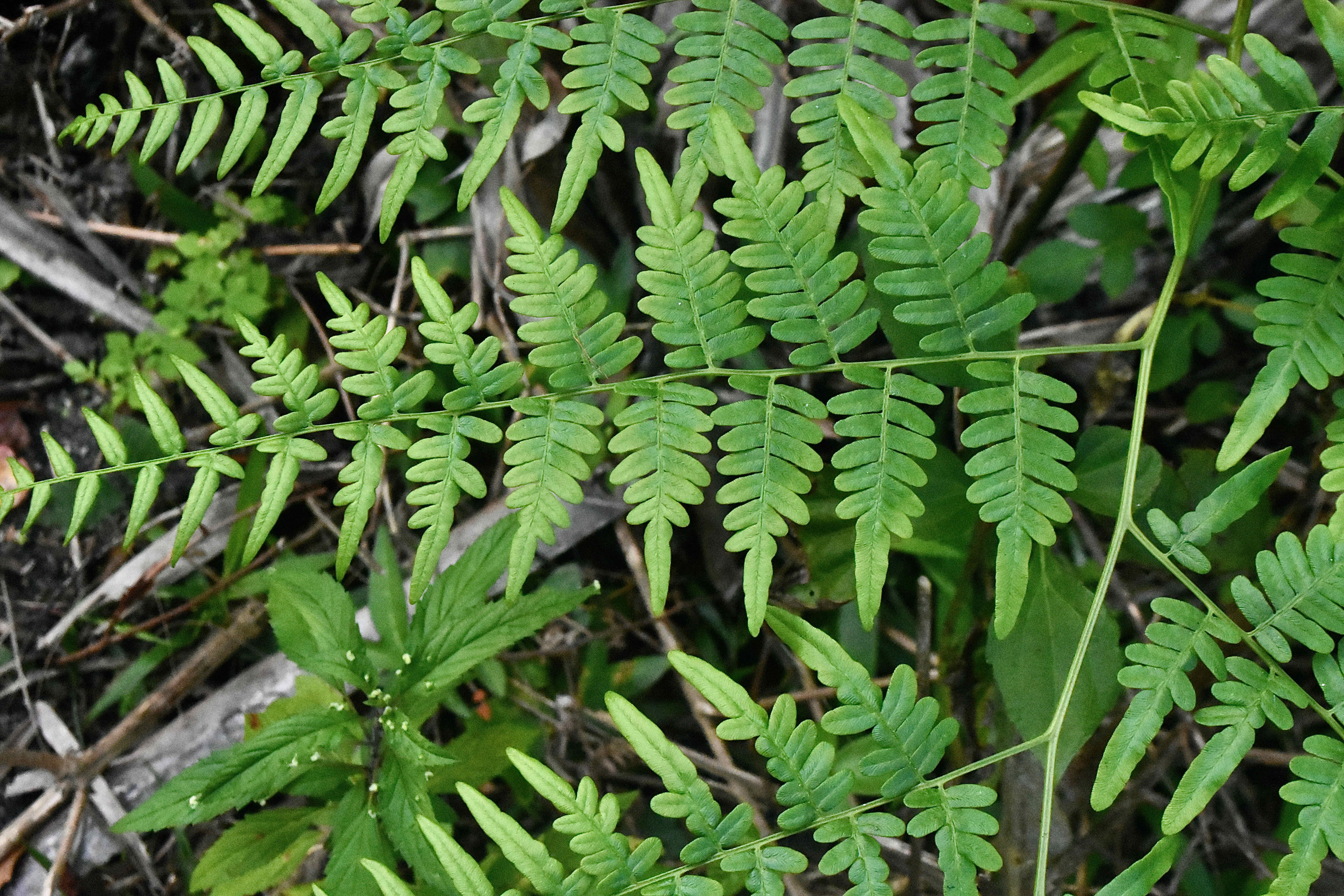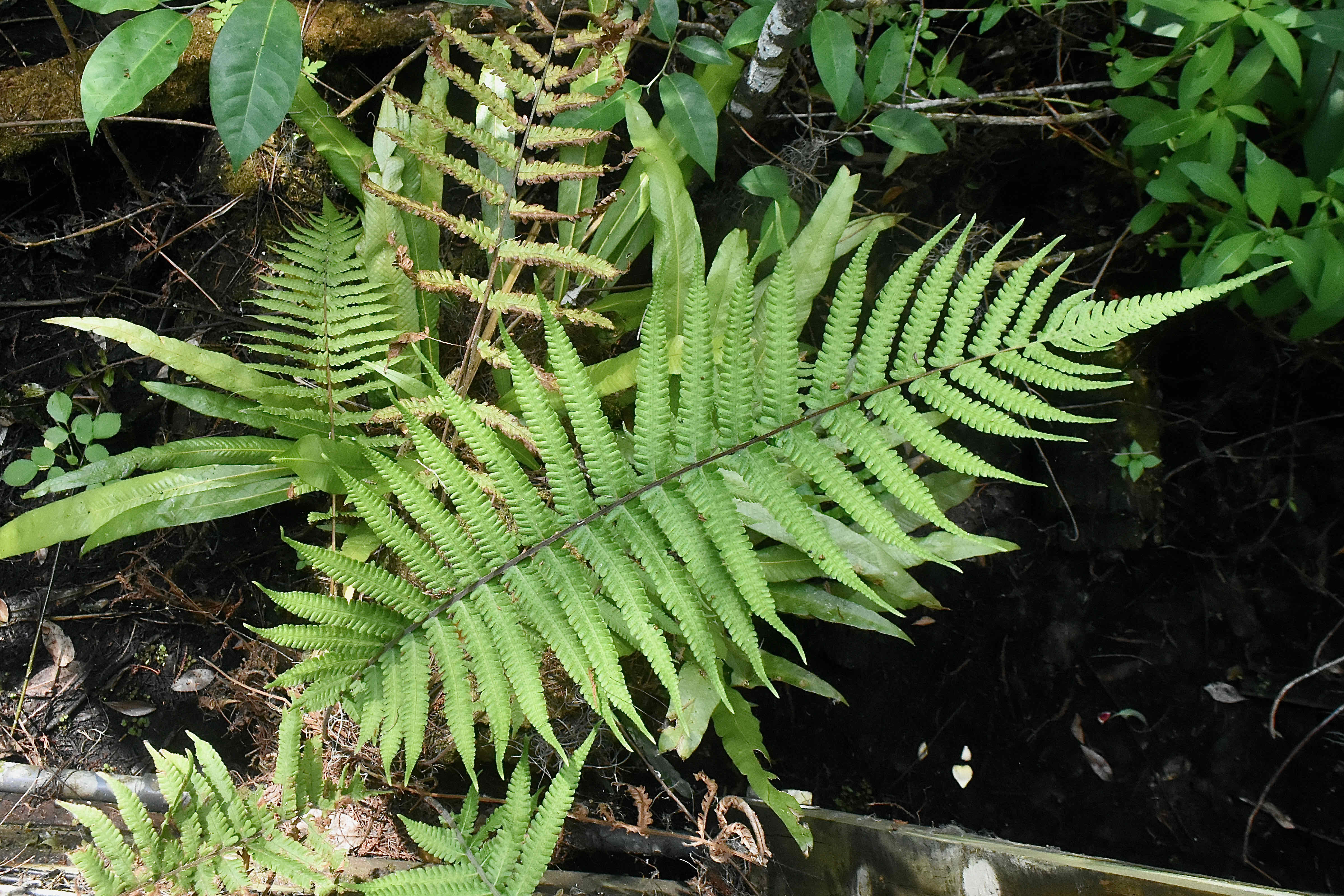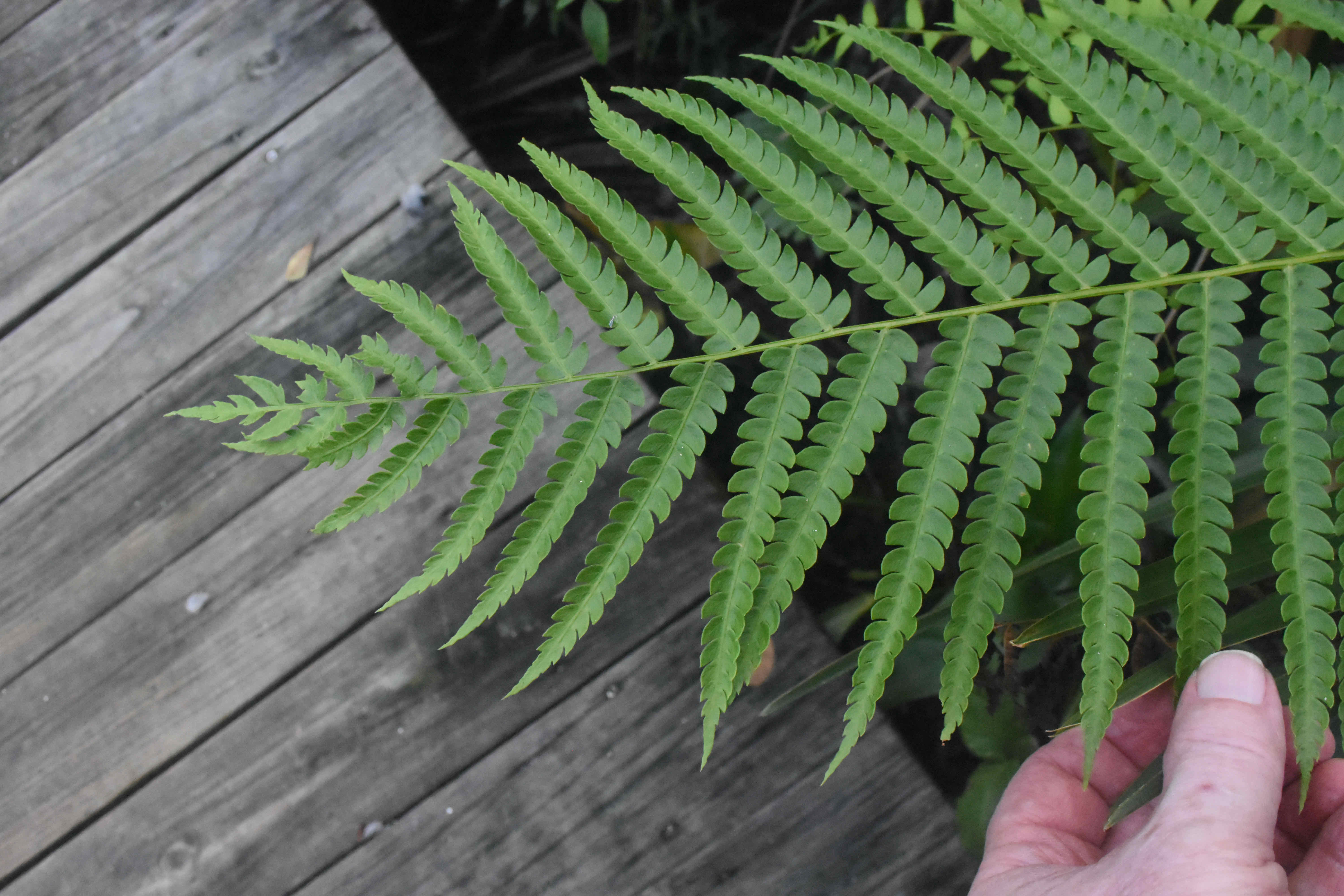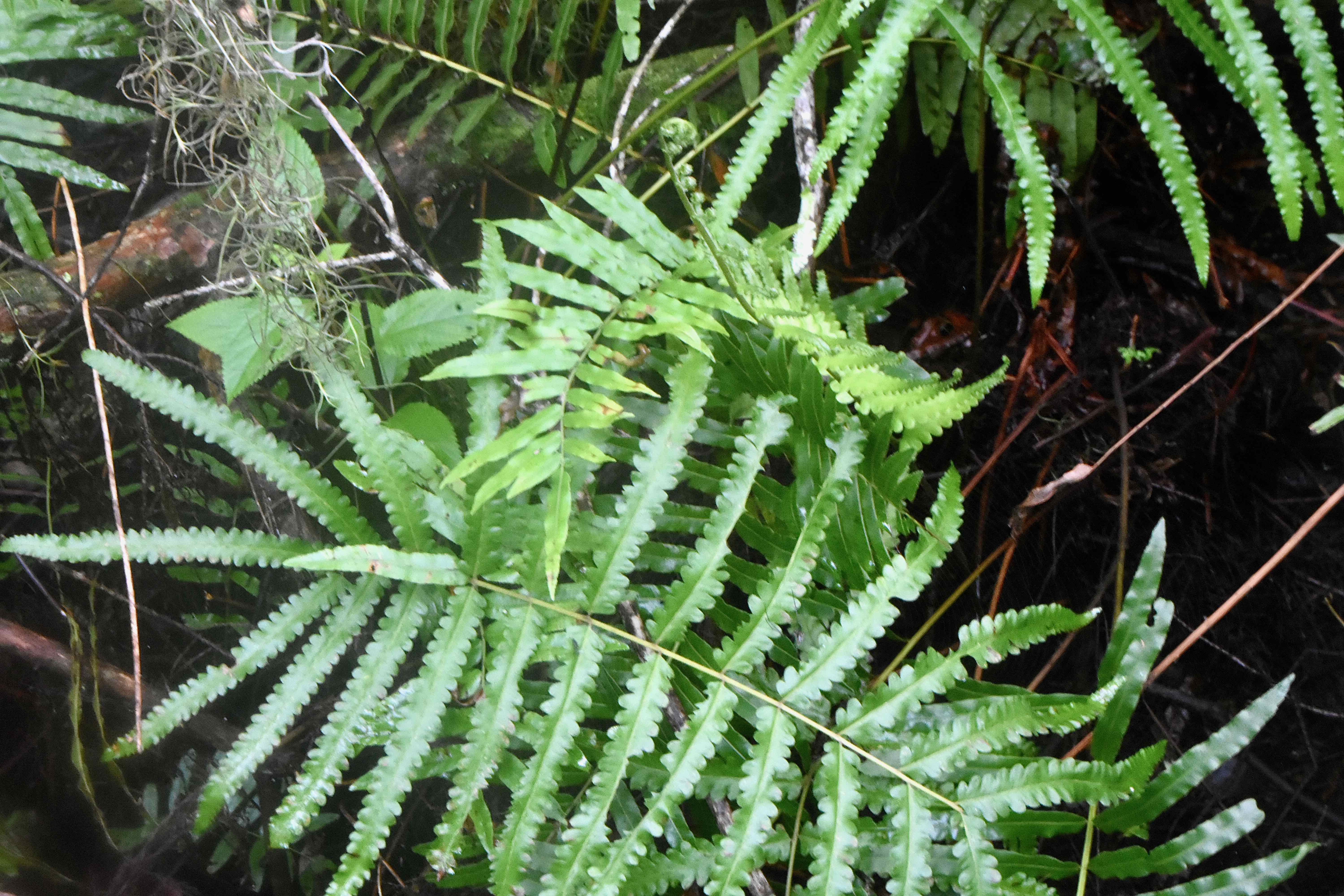
Cinnamon fern, photographed at Peck Lake Park, Hobe Sound, Martin County, in December 2021.
Dinosaurs might have munched on the fronds of cinnamon fern, Osmundastrum cinnamomeum, the species is that old. In fact, cinnamon ferns likely were around millions of years before the first dinosaur trod upon the earth.
Using fossil records and standard dating techniques, scientists date the fern back to 150 million years ago. But other methods push back the rise of cinnamon ferns to nearly 250 million years — the early Triassic Period.
Thing is, this ancient plant is still flourishing on three continents, with a native range that includes a good chunk of North America as far north as Quebec and Newfoundland, as far west as Texas and as far south as the Sunshine State. It’s also native to Bermuda, parts of the Caribbean, southern Mexico, Central America and South America. It has a subspecies, O c asiatica, found in Thailand, Vietnam, parts of China, Japan, the Korean Peninsula, and far eastern Russia.
It’s found in nearly every county in Florida; two major exceptions: Miami-Dade and Monroe.
The inspiration for the name, cinnamon fern: The light brown plumes it sends up in late winter and early spring, and again in the fall. These are fertile fronds, covered with the reproductive parts of the fern called sporangia, which give the fronds a cinnamon color. In more northern parts of its range, the fronds only appear in the spring.
Favorite habitats include damp woods, the margins, or edges, of swamps and baygalls (tree islands where red bay is the predominate tree species), soils that are rich in nutrients and organic material, and are on the acidic side. It doesn’t tolerate drought, but it also doesn’t grow in places with standing water throughout the year.
Normally, cinnamon fern grows to two to three feet tall, but under ideal circumstances it reach six feet. The green, infertile fronds arise in clusters from the roots at a steep angle. It’s commonly described as being shaped like a vase. The effect is more pronounced when the fertile fronds are on the plant, with the contrast in colors.
The fronds are twice compound, or bipinnate (or bipinnifid) in the language scientists use to describe ferns. The leaflets, or pinna, are made of leaflets. The fronds are also football-shaped, with leaflets narrow at the base of the central stem, becoming wider in the middle and narrowing again at the tip. The fertile fronds are green as they emerge, turn brown as they mature and wither away after releasing their spores.
Cinnamon fern has rhizomes, or underground stems, that help the plant spread. The rhizomes also give the plant a degree of fire tolerance, enabling the plant to survive a fire during the wet season. A fire with the same intensity during the dry season likely would kill it, however.
Native Americans used cinnamon fern medicinally to treat headaches, muscle pain, chills and snakebites. The fiddleheads — emerging new fronds — are edible. Both deer and cattle are known to graze on cinnamon fern.
The plant is commonly used in landscaping, so much so that Florida regards it as commercially exploited. A permit is necessary to remove the plant legally from the wild. However, it is widely (and legally) available from commercial nurseries.
A taxonomic note: Many references use Osmunda cinnamomea as the scientific, or binomial, name for cinnamon fern. O cinnamomeum, the name we used at the top of this page, is newer, and used by both the Florida Atlas of Vascular Plants and the Institute for Regional Conservation. It was the great Swedish scientist Carl Linnaeus who first described cinnamon fern in 1753.
In any case, it is a member of Osmundaceae, the royal fern family.



